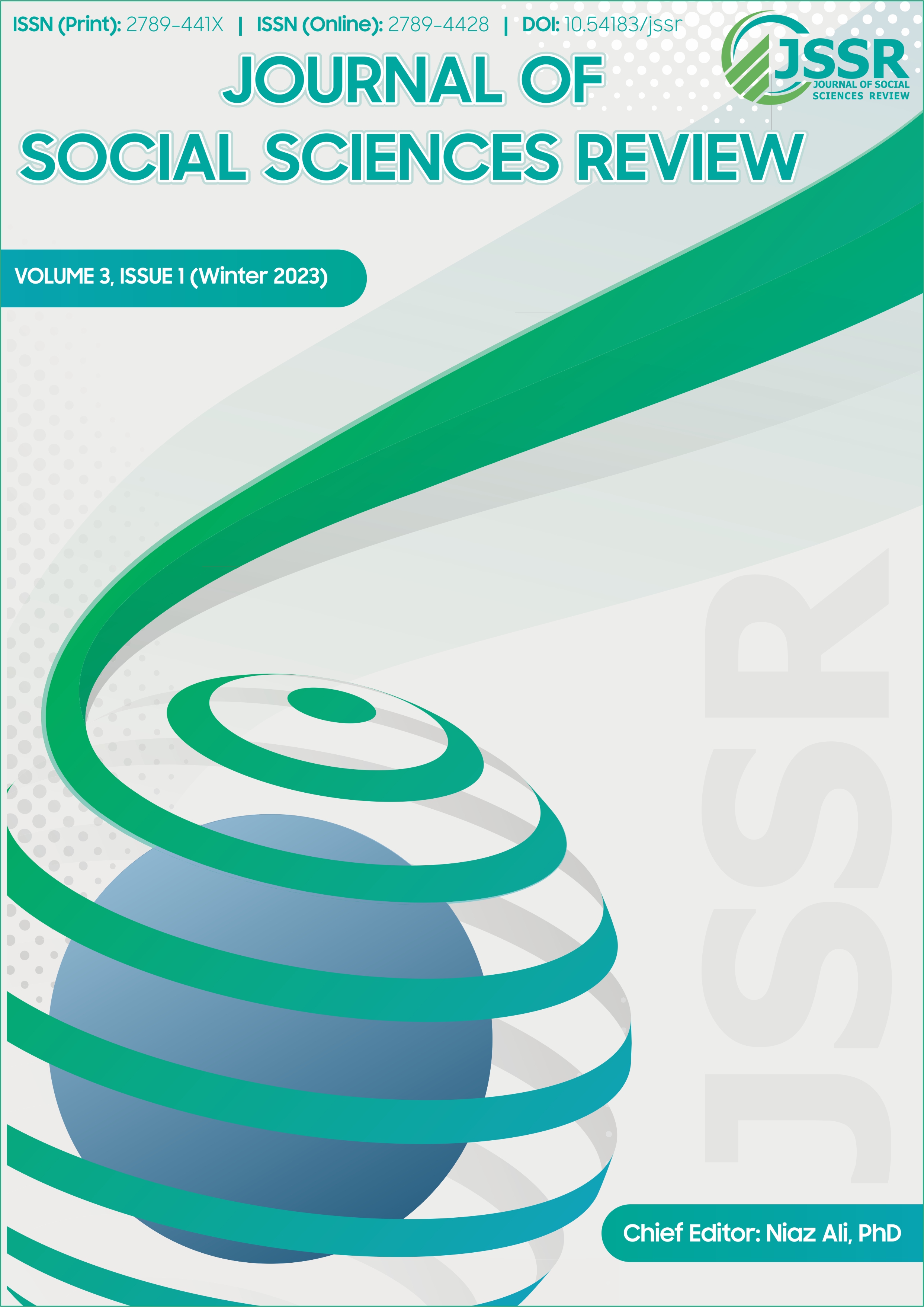Impact of Bacteriological Water Quality on Water Borne Diseases and its Health Costs among Students of the Institutions
DOI:
https://doi.org/10.54183/jssr.v3i1.164Keywords:
E.coli Bacteria, Total Fecal Coliform Bacteria, Total Plate Count, Hygiene Practices, Water Borne Diseases, WBDs CostsAbstract
In the developing world, a substantial revenue ($0.7 billion per annum in Pakistan (Resources & Tel, 2018) while in India $0.6 billion is lost due to WBDs per year (Pathak, 2015) is spent, by citizens as well as the state, on the treatment of avoidable Water Borne Diseases (WBD), which is often far greater than the investment required to improve water quality. Many agencies like Public Health Engineering, WASA, PCSIR, PCRWR etc. are carrying out water quality tests regularly and publish their findings periodically. However, none of these studies, so far, have included the disease incidence, direct and indirect costs borne by the citizens as well as the state, due to poor water quality and poor hygiene practices such as environmental hygiene, personal hygiene, water and food hygiene. From the result analysis of E.Coli, Total Fecal Coliform Bacteria (TFCB) and Total Plate Count (TPC) Tests it was found that only 5.13 % of samples of water were contaminated with E.Coli and TFCB but from the surveys it was concluded that the disease incidence is more in the study area
References
Butt, M., & Khair, S. M. (2014). Cost of Illness of Water-borne Diseases : A Case Study of Quetta. J. App. Em. Sc, 5(2), 133–143. https://doi.org/journal.buitms.edu.pk/j/index.php/bj/article/download/144/128
CDC. (2014). CDC - Parasites - About Parasites. Centers for Disease Control and Prevention.
Diersing, N., Keys, F., & Marine, N. (2009). Water Quality : Frequently Asked Questions. Florida Keys National Marine Sanctuary, 5–6.
Hartlapp, I. (2019). Gastrointestinal illness. Oxford Handbook of Humanitarian Medicine, 647–668. https://doi.org/10.1093/med/9780199565276.003.0038
Johnson, D. L., Ambrose, S. H., Bassett, T. J., Bowen, M. L., Crummey, D. E., Isaacson, J. S., Johnson, D. N., Lamb, P., Saul, M., & Winter-Nelson, A. E. (1997). Meanings of Environmental Terms. Journal of Environmental Quality, 26(3), 581–589. https://doi.org/10.2134/jeq1997.00472425002600030002x
Khan, T. M., Muhammad, S., Khan, B., & Khan, H. (2011b). Investigating the levels of selected heavy metals in surface water of Shah Alam River a tributary of River Kabul, Khyber Pakhtunkhwa. Journal of Himalayan Earth Sciences, 442, 71–79.
Kosek, M., Bern, C., & Guerrant, R. L. (2003). The global burden of diarrhoeal disease, as estimated from studies published between 1992 and 2000. Bulletin of the World Health Organization, 81(3), 197–204. https://doi.org/10.1590/S0042-96862003000300010
Liu, L., Johnson, H. L., Cousens, S., Perin, J., Scott, S., Lawn, J. E., Rudan, I., Campbell, H., Cibulskis, R., Li, M., Mathers, C., & Black, R. E. (2012). Global, regional, and national causes of child mortality: An updated systematic analysis for 2010 with time trends since 2000. The Lancet, 379(9832), 2151–2161. https://doi.org/10.1016/S0140-6736(12)60560-1
Malik, A., Yasar, A., Tabinda, A. B., & Abubakar, M. (2012). Water-borne diseases, cost of illness, and willingness to pay for disease interventions in rural communities of developing countries. Iranian Journal of Public Health, 41(6), 39–49.
Pathak, H. (2015). Effect of Water-borne diseases on Indian Economy: A cost-benefit analysis. Analele Universităţii Din Oradea, Seia Geografie, 25(1), 74–78.
Peter H. Gleick. (2015). Dirty Water: Estimated Deaths from Water-Related Diseases 2000-2020 Pacific. Pacific Institute Research Report, 1–12.
Solomon, A., Ahmed, Z., Biruktawit, K., Amare, D., Solomon, A., & Endalew, Z. (2011). Bacteriological analysis of drinking water sources. African Journal of Microbiology Research, 5(18), 2638–2641. https://doi.org/10.5897/ajmr11.218
World Health Organization. (2019). Safe water, better health. 2019 update. In Geneva: World Health Organization; 2019. License: CC BY-NC-SA 3.0 IGO. Photographs:
Downloads
Published
Issue
Section
License
Copyright (c) 2023 Copyright in the Journal of Social Sciences Review is retained by the author(s). Authors also grant any third party the right to use the article freely as long as its integrity is maintained and its original authors, citation details and publisher are identified.

This work is licensed under a Creative Commons Attribution-NonCommercial 4.0 International License.
SSR's Editorial Board shares the vision of providing free access to information, education, and science for everyone, thus promoting its content through an OPEN ACCESS POLICY, fulfilling the DOAJ definition of open access. The JSSR adheres to an Open Access and Copyright Licensing Policy based on the belief that making research freely accessible to the public promotes greater global knowledge sharing.
The JSSR uses the Creative Commons Attribution-NonCommercial 4.0 International License. The authors who apply and publish in JSSR consent to abide by the copyright policy set out in the Creative Commons 4.0 license (Attribution-NonCommercial 4.0 International license).
- Copyright in the Journal of Social Sciences Review is retained by the author(s).
- Authors also grant any third party the right to use the article freely as long as its integrity is maintained and its original authors, citation details and publisher are identified.
While "By 'open access' to this literature, we mean its free availability on the public internet, permitting any users to read, download, copy, distribute, print, search, or link to the full texts of these articles, crawl them for indexing, pass them as data to software, or use them for any other lawful purpose, without financial, legal, or technical barriers other than those inseparable from gaining access to the internet itself."



